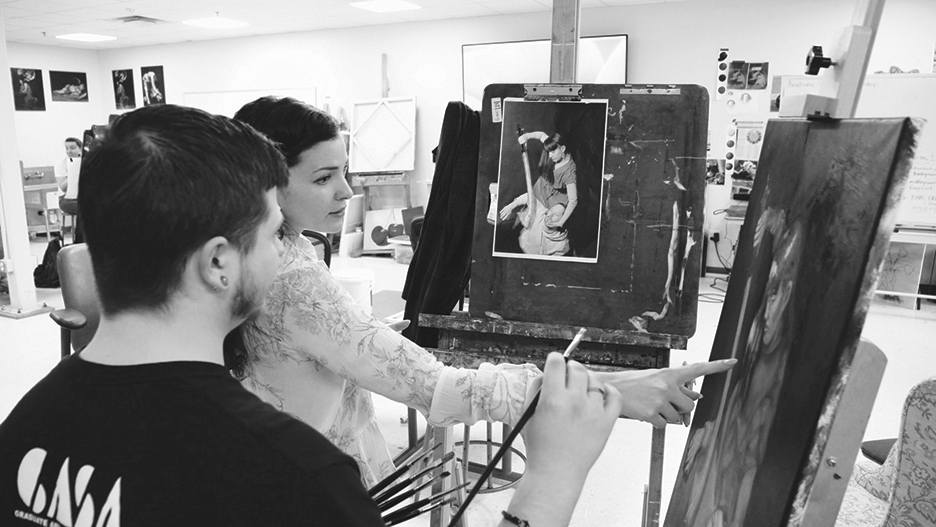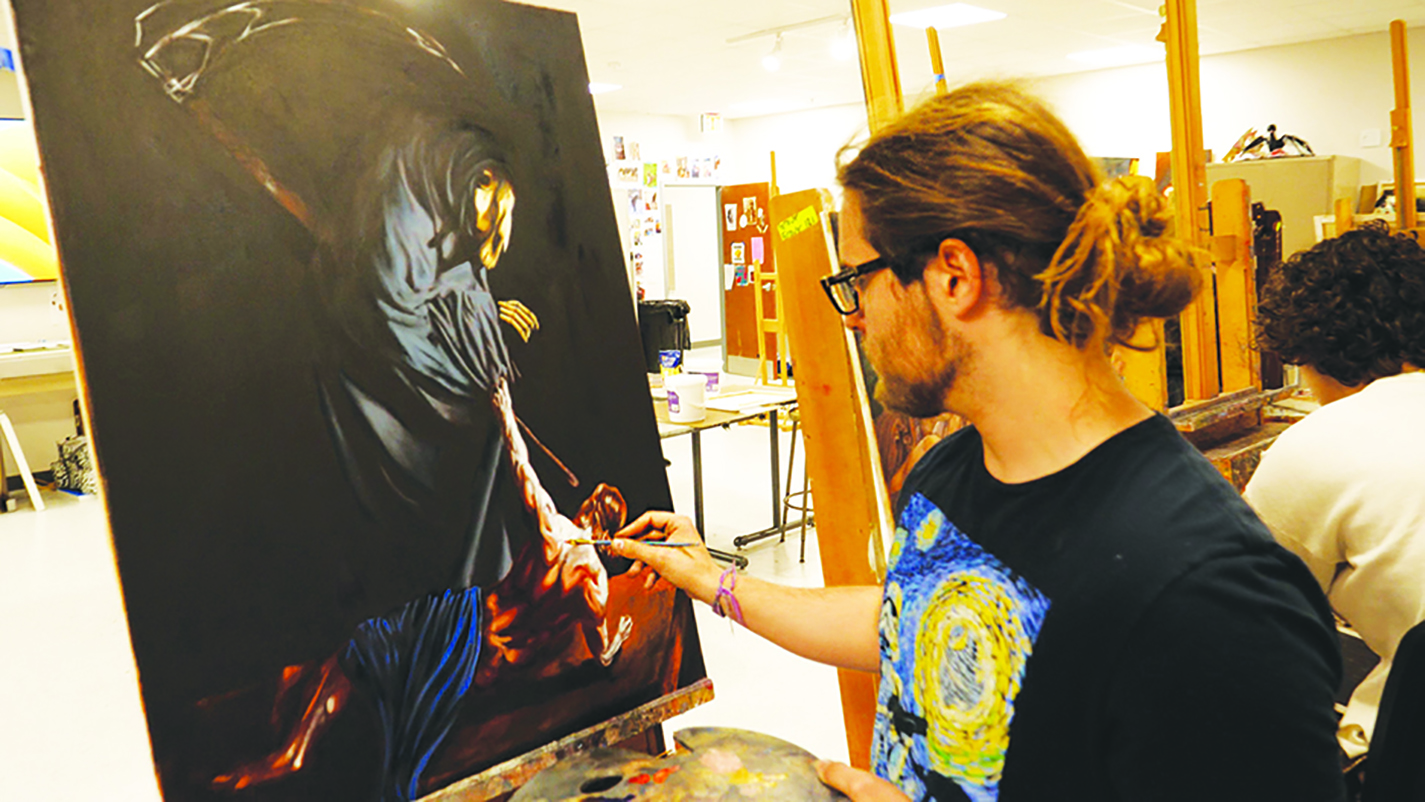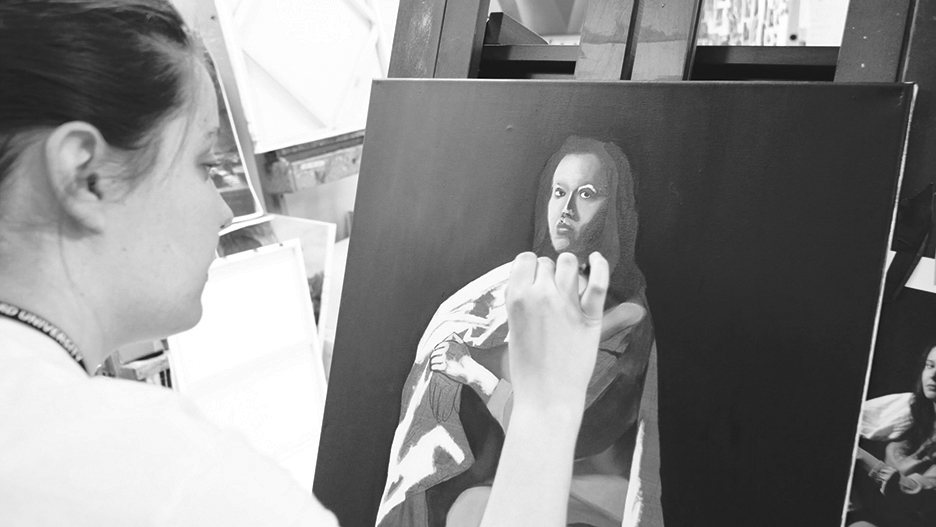Photos courtesy of Radford University



Sean Kotz for Radford University
RADFORD – He was a violent man and a brilliant artist, a hard drinking, brawling painter on the run from murder charges, whose techniques would influence the likes of Rubens and Rembrandt.
He is known as Caravaggio, and this spring students in Alexandra Leonetti’s Special Topics class at Radford University have been learning his methods and applying them in new ways.
Caravaggio’s works are some of the most recognized paintings in European art. Many people who have never heard his name are still familiar with his imagery. His art features Biblical and mythic subjects set in dark umber tones, with highly contrasted flesh and clothing. As one might imagine for a character like Caravaggio, beheadings were a favorite subject.
To understand the master’s techniques, Leonetti first had her students select one of Caravaggio’s paintings to copy. In this way, students absorbed the forms, style and techniques, learning to work with oils to draw out light and color on a shadow drenched canvas.
Next, she asked them to create their own compositions using the technique. Some students created a photographic reference for their ideas, while others worked from their imaginations. It’s a skill-based training that can complement the students’ work in conceptual and contemporary courses and give them something new they can add to their repertoire of skills that is normally only taught in specialized schools.
“They’ve learned a lot of things in this class,” Leonetti said. “We’ve learned a different way doing skin tones using red umber. We’ve used calcium carbonate. We’ve used cobalt drier; different materials that they may not have used before.”
Leonetti’s experience in this method goes back to her own training while studying in Italy. In addition to the instruction and practice, she was also able to see original Caravaggio works in Rome, which can be wall-sized works of art. While the students in the class cannot travel to Rome, they do have the benefit of being able study a range of Caravaggio’s works digitally. Since most of his surviving paintings are narrative, they tend to depict a moment of drama in a larger story.
“I wanted to be as dramatic as possible so I could challenge myself with all the things I have learned in this class,” said Mark Crittenden, who has used this class to develop new techniques for lighting, skin, and fabric.
“You really want to take your time with some things,” Crittenden said as he worked on an original composition blending surrealist and mythic elements through the Caravaggio style.
“Stuff like fabric, you can probably do in one session, but something like skin with all the different colors underneath, you probably want to do a few passes.”
Heidi Pinnix is creating a self-portrait entitled Metamorphosis that features an image of her in the present, composited with pictures from her youth. She constructed a photographic reference in Photoshop and has been painting from that.
“I’m focusing on the face first because that is the most important detail,” Pinnix said. “Caravaggio worked fast, so I am assuming he’d work on the most important parts first.”
According to Leonetti, Caravaggio did indeed work quickly, perhaps as a reflection of his life on the run. She says he may have created as many as 200 paintings before he mysteriously died at just 38 years old.
Leonetti says she hopes her students have a better sense of both technique and narrative in their future work.
“That’s what I want them to take out of this,” Leonetti said. “There can be more to your work.”
“With a few extra thumbnails, a little more thought beforehand, and you can have a very strong finished piece.”

